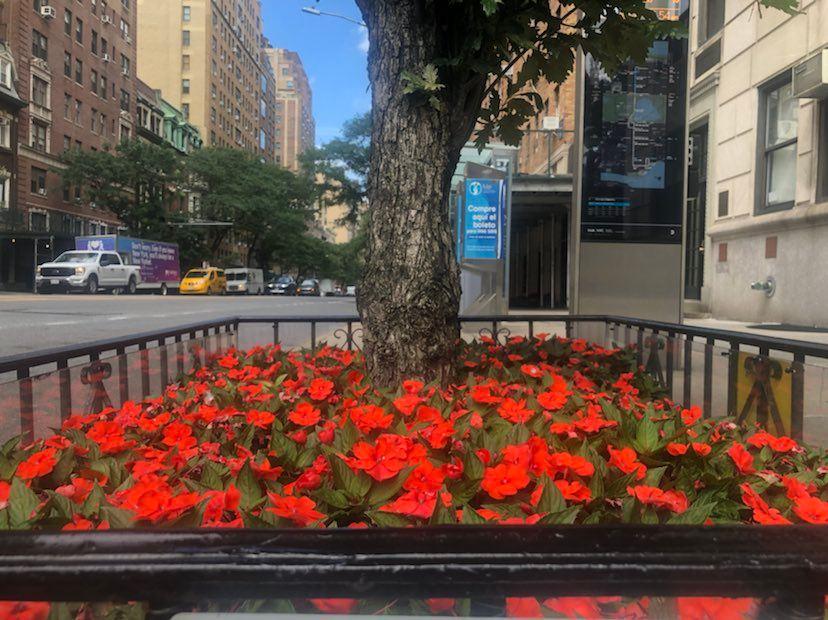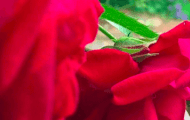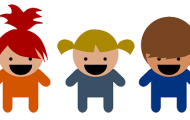
68th between Central Park West and Columbus Ave
One of the great joys of being an Upper West Sider is taking in the seasonal beauty produced in its abundant tree beds. Whether you’re a casual observer taking in their splendor or a gardener getting dirty, planting rosemary, trees, flowers and plants are enjoyed by virtually everybody. Thanks for the oxygen.
Advertisement
Now, we have the results of Council Member Gale Brewer’s Upper West Side Tree Bed Survey, which examined more than 5,248 tree beds from West 54th to 108th streets, between Central Park West and Riverside Drive (District 6).

87th between Columbus and Amsterdam avenues
Bottom line: 123 resident volunteers counted a total of 4,873 trees that were in beds across the district. That’s 92.9%. Research for the survey ran from April 22 to May 27, 2022, which is an “optimal” time to conduct the survey, according to the report, “as the trees have begun regrowth and were getting adequate spring rain.” One of the benefits of tree-lined streets is they can help pedestrians feel about 20 degrees cooler than they do in direct sunlight, according to a National Geographic study by Alejandra Borunda.
READ MORE: The Coolest Tree in NYC
Advertisement
For 2022, 261 (5%) of the beds had trees missing, while 97 (1.8%) were reduced to tree stumps. If you happen to notice a street tree bed empty and would like to get a tree planted, you can submit a request through the NYC Parks Tree Service Request. When a new tree is planted, it takes at least “10 to 20 years” to mature to the point that it can help reduce greenhouse gases like CO2, according to CBS News climate specialist Jeff Berardelli. The health conditions of each tree were recorded as well.

Corner of 86th and Central Park West
READ MORE: Secret Gardens of the Upper West Side
In what might come as a surprise, survey volunteers concluded that only 255 (4.9%) of the 5,248 tree beds surveyed had “visual signs of rat burrows.” Rats were on the rise during the pandemic with far less people moving on the streets. From January 1, 2020, to June 16, 2022, there were a total of 29,345 reports of rat sightings filed with 311, per Open Data.
The least glamorous stat of all: litter. Anyone who maintains a tree bed will tell you this is probably what gives them the most anxiety. From worrying if that dog walking by is going to jump in their tree bed to poo, to having to regularly clean out various forms of garbage to keep things nice and tidy.
The tree bed report shows 2,174 (41.4%) of tree beds contained some form of litter. Cigarette butts were the largest culprit, found in 962 (18.3%) of tree beds. The presence of bottles or plastic waste was found in 829 tree beds, totaling 15.8%. Dog waste gets the bronze, found in 224 (4.3%) of the beds.
Advertisement
This leads us to signage. “The majority of the trees with signs seem to be in better condition (tree health and presence of litter) than those without,” says the reports. Six hundred and sixty-seven (12.7%) tree beds had a sign that carried a message pertaining to curbing your dog, no smoking within 25 feet, rat treatment, “take care of this tree” or “don’t litter.”

69th between Central Park West and Columbus Ave
For the full Tree Bed Survey, click here.
To learn more about the specific tree species on the Upper West Side, click here. You might be surprised to find the most common tree species around here is the Thornless Honey Locust.
*Tree beds in the pedestrian median refuge islands between a bike line and the street were not surveyed.
And now, an original poem by me: Bobby Panza
Puppy Please Don’t Potty
Puppy please don’t potty,
On the planty’s and the tree,
See…
In New York City, especially,
This greenery is a hot commodity.
So, please take that wee-wee and fecal debris,
And shoot it somewhere more appropriately.


